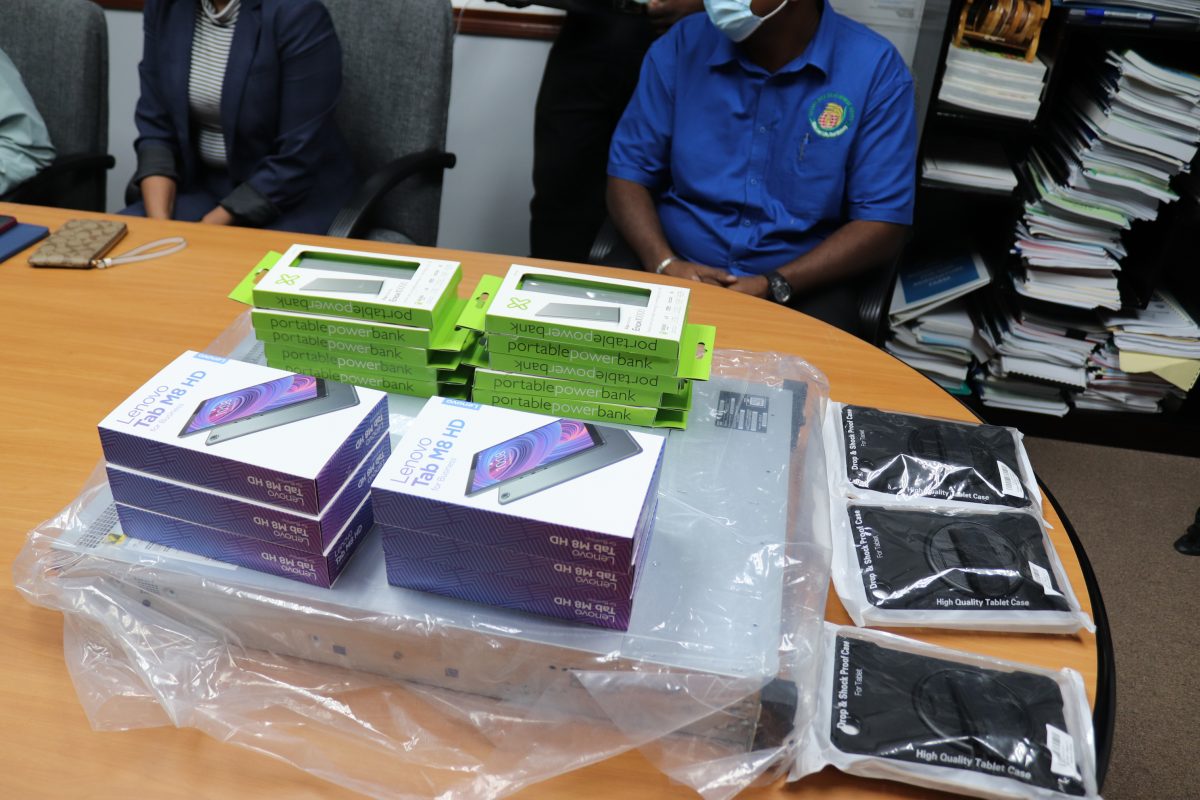The Guyana Rice Development Board (GRDB) yesterday received several pieces of equipment and operational manuals from the Food and Agriculture Organisation (FAO) that will be used to improve its data collection and extension capabilities.
A release from the Ministry of Agriculture said that these pieces of equipment are part of a project aimed at strengthening Guyana’s rice production monitoring system. The equipment included 30 tablets, 10 of which were handed over in April of this year, tablet cases, a server, a backup battery, external hard drives and data entry software tools.
The equipment is valued at over $3 million and will enable the GRDB’s extension staff to transmit real-time data from the field to the office.
Agriculture Minister Zulfikar Mustapha said that the tablets and equipment that were donated will assist the GRDB to ensure reliable data collection.
“Agriculture is one of the most important pillars in our government’s plan for prosperity, with rice being a major part of our strategic focus to improve the sector. As the world advances, we too must advance. The introduction of technology into our extension services has been widely touted by our government because we understand the importance of introducing new technologies to our daily operations. These tablets and equipment will help our extension officers to have reliable data collection and help us to modernize our entire extension system. Data and statistics are very important when making informed decisions and these tablets will help us to increase the Board’s efficiency, data collection management and strengthen our extension services,” Mustapha said.
FAO Country Representative, Dr. Gillian Smith said “Already in operation, this upgraded data collection system facilitates real-time data collection and transmission of data from the field, reduces the time needed to crunch the numbers, and the probability of introducing human typo errors. It also creates faster, more accurate and comprehensive reports that support planning, faster corrective actions and decision and policymaking. This is digitalized data management, which can ultimately be expanded to other uses within GRDB”.
Some of the equipment (Ministry of Agriculture photo)



